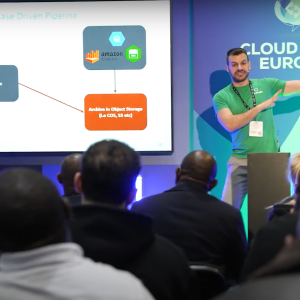
AWS has added “fear” to the range of emotions identified by its Amazon Rekognition facial analysis service in an update this week, drawing immediate criticism.
“We have added a new emotion, ‘fear'”, the company said in a service update on several accuracy and functionality improvements to Rekognition, adding that it now identifies eight emotions, including “angry”, “disgusted”, and “surprised”.
AWS is a major US government contractor, and protesters have targeted the company for providing infrastructure that underpins immigration operations.
See also: Default Access for ‘Everyone’? New AWS Data Lake Service’s Settings Raise Red Flags for Security Experts
AWS CTO Werner Vogels was interrupted midway through a keynote speech in July by a group of some 30 protestors playing recordings of children being separated from their parents at a US Customs and Border Protection facility. The update seems likely to exacerbate critics’ discomfort with its role hosting immigration databases.
Amazon Rekognition Fear Addition Draws Fire
Corey Quinn author of the “this week in AWS” newsletter, tweeted: “AWS comes under fire for Rekognition sales to the federal government, who [sic] in turn is building concentration camps for children, and AWS’s response is to improve “age range estimation” and “fear detection” in the service?
Are you fucking kidding me?
AWS comes under fire for Rekognition sales to the federal government, who in turn is building concentration camps for children, and AWS's response is to improve "age range estimation" and "fear detection" in the service?
Are you FUCKING KIDDING ME?! https://t.co/RiQ850uAFq
— Corey Quinn (@QuinnyPig) August 12, 2019
The public cloud behemoth has also improved accuracy for emotion detection of the other seven emotions it recognises. These are “happy”, “sad”, “angry”, “surprised”, “disgusted”, “calm”, and “confused. It has also improved age range estimation accuracy.
The company said in the short update Monday that triggered the reaction: “Amazon Rekognition provides a comprehensive set of face detection, analysis, and recognition features for image and video analysis. Today, we are launching accuracy and functionality improvements to our face analysis features.
“We have Improved Age Range Estimation Accuracy”
“Face analysis generates metadata about detected faces in the form of gender, age range, emotions, attributes such as ‘Smile’, face pose, face image quality and face landmarks. With this release, we have further improved the accuracy of gender identification. In addition, we have improved accuracy for emotion detection (for all 7 emotions: ‘Happy’, ‘Sad’, ‘Angry’, ‘Surprised’, ‘Disgusted’, ‘Calm’ and ‘Confused’).
“[We have] added a new emotion: ‘Fear’. Lastly, we have improved age range estimation accuracy; you also get narrower age ranges across most age groups.”
The backlask online was swift and sharp.
In 25 years we're going to be talking about how AWS handled this situation in the same way we talk about how IBM enabled the holocaust.
Every engineer and ML researcher who worked on this should be ashamed of themselves. https://t.co/tdqBudqJrV
— Robert Hafner (@tedivm) August 13, 2019
Few technologies have been more controversial than facial recognition, which faces legal challenges in the UK and the US by civil liberties groups.
Microsoft president Brad Smith was among those recently to call for regulation of the technology, saying in a December 2018 blog post: “This technology brings important and even exciting societal benefits but also the potential for abuse.
“We believe it’s important for governments in 2019 to start adopting laws to regulate this technology. The facial recognition genie, so to speak, is just emerging from the bottle. Unless we act, we risk waking up five years from now to find that facial recognition services have spread in ways that exacerbate societal issues. By that time, these challenges will be much more difficult to bottle back up.”






